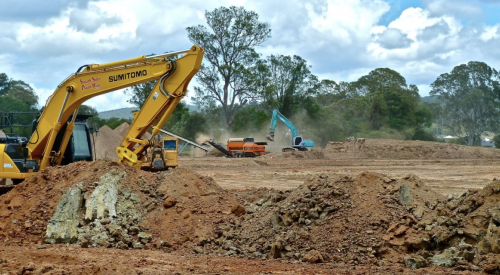|
|
|
|
|
|
|
Run down the list of Strivers, firms that rank from No. 276 to No. 400 in housing revenue, and it's obvious these companies have more in common with the fragmented mainstream of the American housing industry than with the multimarket Masters of the Universe.
They are mostly family businesses operating in a single housing market, and many of those markets are small. However, they are all production builders. The list begins with Don Simon Homes of Madison, Wis., which closed 275 attached and detached homes for $59.4 million in 2002. It's the largest builder in Madison and a past winner of the National Housing Quality Award. The list ends with Irving, Texas-based Norstar Building Corp., which completed 216 rental apartments in 2002 for revenue of $12 million. So these are not small, custom builders. They share the attributes of mass-production processes with those above them in the rankings.
It would be a mistake to characterize these companies as disinterested in growth. In the early 1980s, David Weekley Homes was one of them - a single-market builder in Houston with $20 million in annual revenue. However, there are certainly many family firms on this list with not the slightest interest in mastering the universe.
"We're growing our top line conservatively," says Jamie Bigelow, president of Bigelow Development in Palatine, Ill. "Our interest is in aggressively growing margins, both gross and net. We've built our net profit from 6% to 8% to 13% over the last three years." Bigelow is No. 363 on 2002 volume of $36.1 million from 219 closings. The firm closed 204 houses in 2001 and 190 in 2000.
Bigelow Development is carving a niche, away from the competition of Chicago's high-volume GIANTS, by building intimate TND communities of detached homes at densities above nine units to the acre. "No one else in Chicago is building affordable TND," Bigelow says. "We'll close about 220 houses this year. But by 2005, we'll take it to 350 homes."
Bigelow says he'll never do more than 500 homes a year. "I don't want to add another layer of management," he says, "and it's a slow process to get our affordable TNDs approved. But we make much better margins on them than when we try to compete with the big boys in commodity housing."
Strivers are not always young bucks such as Bigelow, trying to make a mark in the world. Sometimes the list contains the name of an old warrior, hinting at past glory. Former PB Builder of the Year John Crosland might be one of these, even at age 74.
Some 14 years after selling his legendary home building business in Charlotte, N.C., Crosland is still in the rankings at No. 332 (up from No. 369 a year ago), with $44 million in revenue from 618 rental apartments. But Crosland is not just dabbling to stay amused.
"We're not just building apartments," he says. "We probably do more retail than anything else. We have six businesses, including Crosland Properties, which is the multifamily operation. Crosland Land is a developer of residential lots sold to major production builders. Crosland Retail does mixed-use projects that create urban lifestyle settings in suburban locations. Crosland Commercial does some office and industrial development."
Even after 14 years, Crosland can't build houses under his name, which he sold with his company. "I tried to get it back," he says, "but they don't want me to do that. Even after 14 years, Crosland is the strongest brand name in the Charlotte housing market."
However, he is building houses again, under the name Lillian Floyd Homes. "That's my mother's maiden name," Crosland says with a laugh. "It's not a lot of homes yet. We'll do about $30 million worth of houses priced between $200,000 and $300,000 this year. We'll probably move into the $400,000 range next year."
Crosland Companies has opened an office in Raleigh, N.C., and contemplates one in Tampa. "That's not for housing," Crosland says. "It's for land development and retail."
At the top of the Strivers, David Simon has a unique perspective on the companies below and above his Madison, Wis., firm. "We've never been interested in being the biggest," he says. "We always focused on improving the quality of our houses. We're now building 100% to green building standards and Energy Star certification, but now we're a lot more interested in building better neighborhoods. All of our new neighborhoods are TND. Consumers have been given very little choice for the last 40 years in how neighborhoods are planned. Now they're clamoring for better places to raise children. We see very strong demand for alley-loaded communities.
"I think this is the wave of the future, and the higher development costs are more than offset by higher densities. But when you make money on the higher density, you can't skim off those savings. You have to put them back into higher levels of community detailing - better landscaping, streetscaping, pocket parks and more architectural detailing on the houses. Consumers have a keen sense of value."
Strivers report an average of 8.4% profit, which is about what you'd expect for the smallest of production building GIANTS. As Bigelow's experience in Chicago's competitive market testifies, such companies can be pummeled by the big boys if they're caught in a price-per-square-foot battle.












